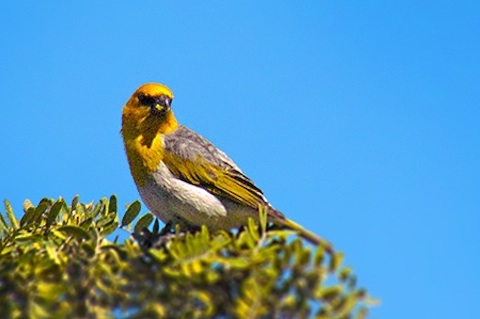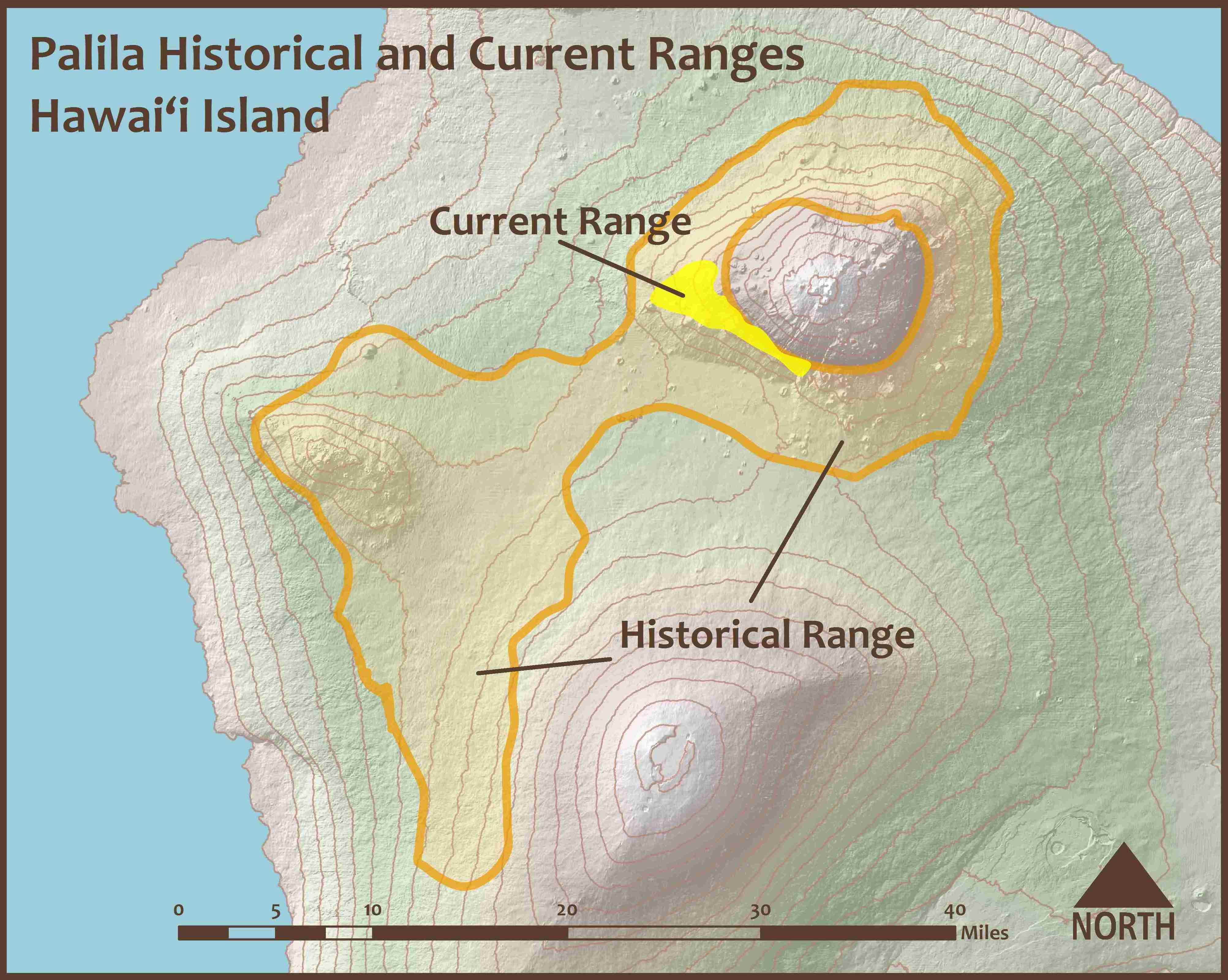Distribution
PALILA
(Loxioides bailleui)
Found only on the upper slopes of the largest mountain in the world, Mauna Kea, the critically endangered Palila has a vibrant yellow head, a strong bill, and a delightful call. This spectacular bird is an important part of our Hawaiian heritage worth protecting.
|
Distribution—where palila liveHistorically, palila occurred on the islands of Hawai‘i, O‘ahu and Kaua‘i. On Hawai‘i Island, they inhabited the māmane forests on Mauna Kea, Hualālai, Mauna Loa and the saddle area in between. Today though, palila only live on a very small part of Mauna Kea’s southwestern slope where contiguous māmane forest still occurs between the elevations of 6,600 to 9,600 feet. This area represents less than 5% of the area they originally occupied on Hawai‘i Island. They disappeared from Hualālai in the late-1800s and were last seen on Mauna Loa in 1950. Palila that occurred in the lowland māmane forests of Kaua‘i and O‘ahu apparently disappeared before western explorers arrived; their presence there is only known from sub-fossil remains. |


